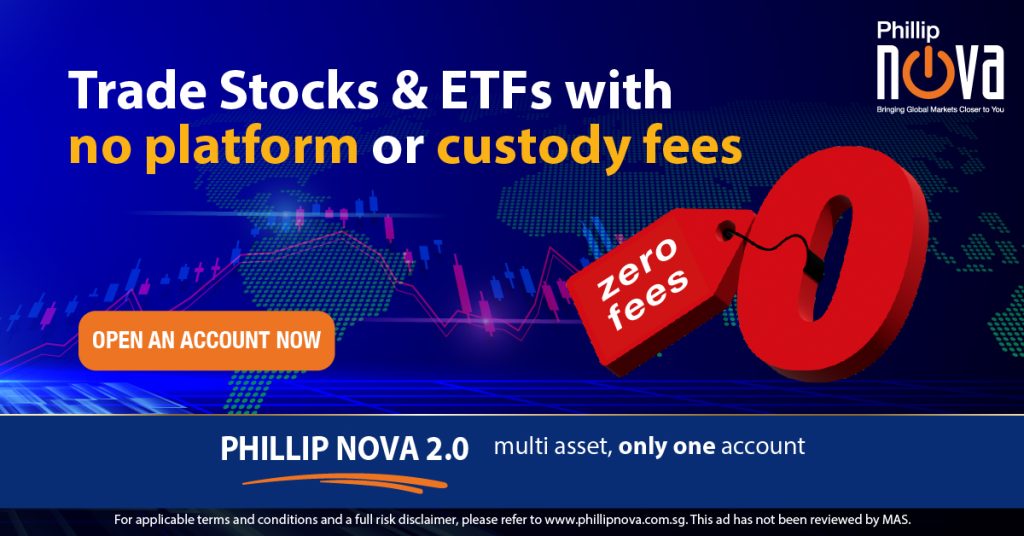Exchange Traded Funds (ETFs) offer diversified exposure to equities, bonds, commodities, and more. However, with thousands listed across global markets, choosing the right ETF can feel like navigating a maze. This guide offers a practical, step-by-step framework to help you select ETFs to trade with Phillip Nova.
Step 1: Define Your Asset Class Exposure
Start by asking: What do I want to own and why? Asset allocation drives long-term portfolio outcomes. ETFs span the major building blocks below, each with distinct roles and popular examples:
| Asset class | Investment Objective |
Popular ETFs |
| Equities | Capital appreciation, sector or regional tilts |
United States: VOO (U.S. Large-cap – S&P 500) Singapore: G3B (SG Large-cap – STI) Japan: 1321 (Japan Large-cap – Nikkei 225) |
| Fixed Income |
Income generation, stable |
United States: TLT (20+Y U.S. Treasuries) Singapore: MBH (Investment Grade Corporate Bonds) Malaysia: 0800EA (Malaysian Government Bonds) |
| Commodities |
Inflation hedge, diversification |
United States: GLD (Gold), SLV (Silver) Singapore: GSD (Gold) Hong Kong: 3081 (Gold) |
| Real Estate | Listed property exposure, income |
United States: USRT (US REITs) Singapore: CLR (Singapore REITs) Japan: 1476 (Japan REITs) |
| Multi-Asset | One-ticket balanced mix | United States: AOR (60/40 Balanced Allocation ETF) |
Step 2: Identify Sector Opportunities
If you have a view on specific industries, sector ETFs offer targeted exposure. Here’s how to align sectors with strategic themes:
| Sector | Strategic rationale | Popular ETFs |
| Technology | Innovation-led growth | Hong Kong: 3033 (Largest Tech Companies Listed in HK – Hang Seng Tech) |
| Healthcare | Defensive characteristics, demographic tailwinds | Japan: 1621 (Largest Pharmaceutical Firms on TSE’s Topix) |
| Financials | Rate, credit, and cycle sensitivity | Japan: 1615 (Largest Banks Listed on TSE’s Topix) |
| Consumer Staples | Resilience through cycles | United States: XLP (Largest Consumer Staples Firms in S&P 500) |
| Industrials | Exposure to activity and CAPEX cycles | United States: XLI (Largest Industrial Firms in S&P 500) |
Step 3: Match Strategy to Investment Style
Different ETF designs suit different goals and preferences:
- Broad market ETFs: Core exposure to large, diversified indexes; efficient for long-term compounding.
- Dividend ETFs: Tilt toward income and potential quality factors.
- Thematic ETFs: Express views on megatrends (e.g., AI, clean energy); typically, more concentrated.
- Smart Beta/Factor ETFs: Rules-based, factor-informed approaches (e.g., value, quality, low volatility) that systematically deviate from cap-weighted indexes.
- Smart beta strategies bridge passive and active investing – transparent, systematic, and often cost-effective.
Step 4: Evaluate Key ETF Metrics
Beyond theme and ticker, structural quality drives investor outcomes. There are some key metrics that investors should look at before investing in a specific ETF such as:
1) Expense ratio
The expense ratio is an ETF’s annual fee, expressed as a percentage of assets. It can range from nearly 0% to over 10%, depending on strategy. All else equal, lower expenses reduce return drag, especially over longer periods of time. Cost is one of the few certainty variables investors can control in ETF selection. As an investor, you may use screener tools or issuer documents to examine and compare expense ratios across similar products.
2) Asset Under Management & Liquidity
AUM represents the total value of assets held by the ETF. Larger AUM typically signals product stability, tighter spreads, and issuer commitment. ETFs with higher AUM tend to attract more institutional interest and benefit from stronger liquidity. Higher liquidity often also means tighter bid-ask spreads and less slippage, improving execution quality. As a general rule, ETFs with AUM above US$100 million are considered more sustainable and tradable.
3) Domicile & Tax Treatment
ETF domicile affects tax efficiency for Singapore-based investors. Singapore-domiciled ETFs are generally tax-exempt for individuals, with no capital gains or dividend tax. U.S.-domiciled ETFs may incur up to 30% dividend withholding tax (reduced to 15% with treaty filing) and are subject to estate tax. Japan-domiciled ETFs typically apply a 15% dividend withholding tax under treaty terms. Phillip Nova offers access to ETFs across multiple markets; investors should always consider jurisdiction-specific tax implications before investing.
Applying the Framework: Practical Comparisons
- Comparing Gold ETFs: GLD (SPDR Gold Shares) versus GLDM (SPDR Gold Mini Shares) illustrates how ETF design affects cost efficiency and investor accessibility. GLD is structured for institutional liquidity, with a higher expense ratio and larger share price. GLDM, while tracking the same gold benchmark, offers a lower fee and smaller share size – differences that shape suitability for long-term retail investors focused on cost control and fractional allocation.
- Comparing Real Estate and Equities ETFs: G3B (STI ETF) versus CLR (S-REIT ETF) illustrates how asset class exposure drives portfolio behavior. G3B tracks Singapore’s largest listed companies, with heavy weighting in financials – offering cyclical equity exposure and moderate yield. CLR focuses on income-generating real estate assets, delivering higher yield and defensive characteristics. G3B suits growth-oriented investors seeking broad market exposure, while CLR appeals to income-focused investors prioritizing stability and sector purity.
Trade ETFs with Confidence
Start with asset class, refine by sector or theme, then insist on low costs, high tradability, and transparent holdings. With this framework, you can build resilient, goal-aligned portfolios.
With Phillip Nova, you can access ETFs listed on six global markets including Singapore, United States, Japan, Hong Kong, China and Malaysia from as low as 0.01% in commission rate – with no platform fee and no custody fee. Click here to open an account now!
Trade CFDs, ETFs, Forex, Futures, Options, Precious Metals, and Stocks with Phillip Nova 2.0
Features of trading on Phillip Nova 2.0
- Gain Access to Over 20 Global Exchanges
Capture opportunities from over 200 global futures from over 20 global exchanges
- Trade Opportunities in Global Stocks
Over 11,000 Stocks and ETFs across Singapore, US, China, Hong Kong, Malaysia and Japan markets.
- Charting Powered by TradingView
View live charts and gain access to over 100 technical indicators
- True Multi-Asset Trading
Trade CFDs, ETFs, Forex, Futures, Options, Precious Metals and Stocks on a single ledger on Phillip Nova 2.0











